Instructions for Side by Side Printing
- Print the notecards
- Fold each page in half along the solid vertical line
- Cut out the notecards by cutting along each horizontal dotted line
- Optional: Glue, tape or staple the ends of each notecard together
Anatomy & Physiology: Skin & Skeletal system
front 1 TRUE / FALSE
| back 1 ~True~ |
front 2 The skin consists of 2 layers: | back 2 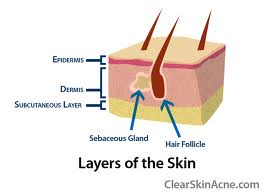 1. Epidermis (outermost protective layer of dead keratinized epithelial cells).
|
front 3 TRUE / FALSE
| back 3 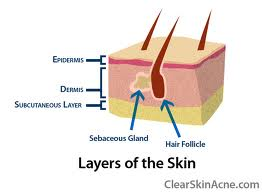 ~True~ |
front 4 The layers of the epidermis, from the OUTER layer to the INNER layer are | back 4 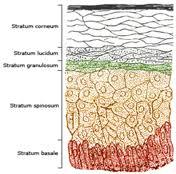 Stratum corneum (most outer layer), Stratum lucidum, stratum granulosum & the (inner most)stratum germinativum (basal).
|
front 5 TRUE/FALSE
| back 5 ~True~ |
front 6 Epidermal cells contain the protein pigment called | back 6 Melanin |
front 7 What is melanin's function? | back 7 Protect against radiation from the sun |
front 8 Dermis | back 8 inner layer of the skin |
front 9 What are the 4 things that makeup the Dermis? | back 9 Fibrous connective tissue w/blood vessels, sensory nerve endings, hair follicles & glands. |
front 10 What are the 2 types of sweat glands? | back 10 Eccrine & Apocrine |
front 11 Eccrine sweat glands | back 11 They are distributed all over the body (except for the lips, tip of penis and clitoris). Regulates body temperature by releasing a water secretion that evaporates from the surface of the skin. |
front 12 Apocrine sweat glands | back 12 mainly in the armpits & groin area, display apocrine secretion. |
front 13 TRUE/FALSE
| back 13 ~True~ |
front 14 Sebaceous glands | back 14 release an oily secretion (sebum) through the hair follicles that lubricates the skin & prevents drying. |
front 15 Oil is produced by | back 15 holocrine secretion, in which whole cells of the gland are part of the secretion. *These glands are susceptible to becoming clogged & attracting bacteria, particularly during adolescence. |
front 16 The appendages of the skin include | back 16 hair & nails. |
front 17 Hair and nails are composed of a strong protein called | back 17 keratin |
front 18 True/False
| back 18 ~True~
|
front 19 Skeletal System | back 19 Skeletal System |
front 20 What does the body framework consist of? | back 20 Bone, cartilage & ligaments, plus the joints between the bones. |
front 21 Functions of the skeletal system include | back 21 support, permission of movement, blood cell formation (hemopoiesis), protection of internal organ, detoxification (removal of poisons), provision for muscle attachment & mineral storage. |
front 22 Calcium & Phosphorus are minerals stored in the | back 22 bone |
front 23 TRUE / FALSE
| back 23 ~True~ |
front 24 Long bones | back 24 Long bones: relatively long, slender; found in the arms, legs, thighs, palms, soles, fingers and toes. Has an irregular epiphysis @ each end, composed of mainly spongy (cancellous) bone & a shaft or diaphysis composed mainly of compact bone. |
front 25 Short bones | back 25 Short bones: somewhat cube-shaped; of nearly equal length and width.
|
front 26 Flat bones | back 26 Flat bones: thin, flat surfaces, no marrow cavity, but spongy bone sandwiched between an upper and lower layer of compact bone. |
front 27 Irregular bones | back 27 Irregular bones: complex shapes; notched, or with ridges; not easily classified into any other category. Example: vertebrae; some facial bones (like the ethmoid or sphenoid); pelvic bones = ischium and pubis; calcaneus (heel bone); mandible |
front 28 Sesamoid bones | back 28 Sesamoid bones: develop in tendons where there is considerable pressure, tension or friction.
|
front 29 The cells that form compact bone are called | back 29 Osteoblasts
|
front 30 The axial skeleton / appendicular skeleton | back 30 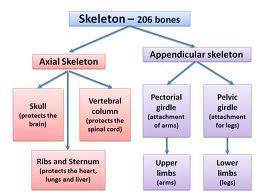 |
front 31 The axial skeleton consists of ___ bones of the skull. | back 31 28 |
front 32 The 28 skull bones are separated into the ___ facial bones and the ___ bones of the cranium. | back 32  14 & 14 |
front 33 The facial bones are | back 33  2 nasal bones, 2 maxillary bones, 2 zygomatic bones, 1 mandible (the only moveable bone of the skull), 2 palatine bones, 1 vomer, 2 lacrimal bones & 2 inferior nasal conchae |
front 34 Bones of the cranium | back 34 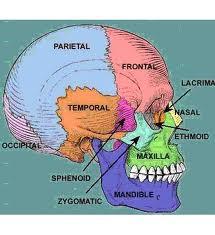 SINGLE occipital, frontal, ethmoid & sphenoid & the PAIRED parietal, temporal & ossicles of the ear (malleus, incus & stapes. |
front 35 Single bones of the cranium | back 35 occipital, frontal, ethmoid & sphenoid |
front 36 Paired bones of the cranium | back 36 parietal, temporal & ossicles of the ear (Malleus, incus & stapes). |
front 37 Ossicle of the ear are | back 37 malleus, incus & stapes |
front 38 The axial skeleton has how many bones in the vertebal column? | back 38 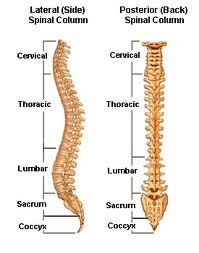 33 |
front 39 Bones of the vertebra are | back 39 Cervical= 7
|
front 40 The final portion of the axial skeleton consists of the bones of the | back 40 thorax, sternum & the 12 pairs of ribs. |
front 41 How many ribs does the human skeleton have? | back 41 12 pairs totaling 24. |
front 42 The appendicular skeleton | back 42 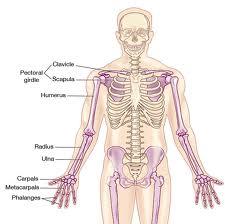 includes the girdles & the limbs. |
front 43 The upper portion (of the append. skeleton) consists of the | back 43 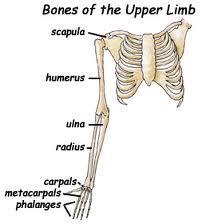 pectoral or shoulder girdle, the clavicle, the scapula & the upper extremity (bones of the arm). |
front 44 The bones of the arm are | back 44 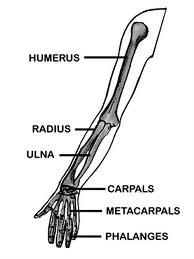 humerus, the radius, ulna, the carpals (wrist bones), the metacarpals (bones of the hand) & phalanges (bones of the finger). |
front 45 What are phalanges? | back 45 bones of the fingers |
front 46 What are metacarpals? | back 46 bones of the hand |
front 47 What are carpals? | back 47 bones of the wrist |
front 48 Image of the hand bones | back 48 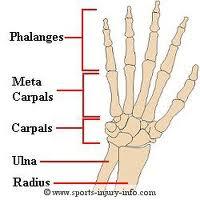 |
front 49 The appendicular skeleton includes the ________ girdle or os coxae. | back 49 pelvic |
front 50 Each of the os coxae consists of a | back 50 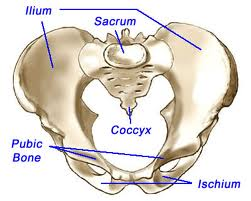 fused ilium, ischium & pubis. |
front 51 Bones of the lower extremity include the | back 51 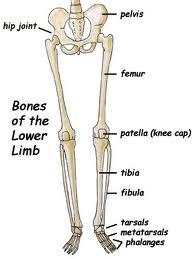 femur (thigh bone)
|
front 52 Thank you for viewing my note cards; please leave comments..I enjoy feedback. I got this information right out of the Hesi 2nd edition book I added a lot more info than the book offers. With these notes you won't need the Anatomy portion in the hesi book at ALL!! ;-) | back 52 Please add notecards of your own. We need Chemistry & Microbiology~ |
front 53 Labled skeleton | back 53 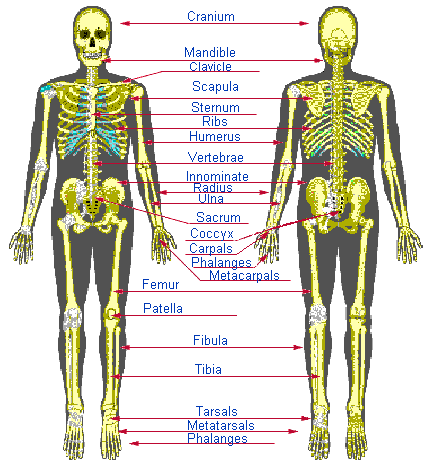 |
front 54 Visual of the entire skeleton | back 54 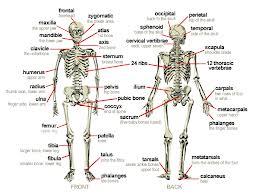 |